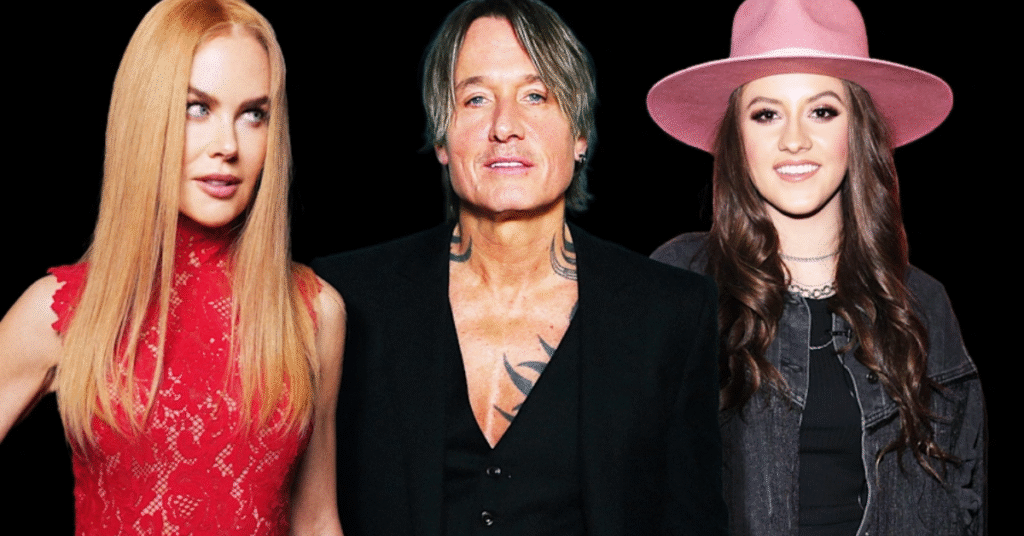Taylor Swift’s Showgirl, her latest album, arrives as more than just another release in her ever-expanding discography. It is, in many ways, a reckoning with history—both personal and professional. With the track Father Figure, Swift turns her pen toward a narrative that has long loomed in the shadows of her career: her relationship with Scott Borchetta, the man who signed her to Big Machine Records and oversaw her earliest rise to stardom. The song is not simply a nostalgic look back; it is an unflinching attempt to process betrayal, mentorship, and the fragile trust that defined one of the most complicated professional partnerships in modern pop history. By reinterpreting Borchetta not as the supportive guardian she once believed him to be but as a flawed paternal archetype, Swift reframes her own story of resilience and reclamation.
What emerges is not a simple portrait of bitterness, but a layered exploration of power, loyalty, and ownership. Father Figure functions both as a confessional and as a cultural statement. It challenges the notion of authority figures in the entertainment industry, especially men who cast themselves as protectors while wielding control over young women’s creative destinies. For Swift, who has spent the past several years re-recording her old catalog to regain control of her masters, this confrontation feels like the natural culmination of a journey that began when she was a teenager.
In this article, we will explore the meaning of Father Figure within the broader themes of Showgirl, how Swift has redefined her relationship with Borchetta through the lens of art, and why this track resonates far beyond her personal narrative. We will also examine cultural reactions, critical interpretations, and the ways in which Swift continues to use storytelling as her most powerful weapon against an industry that has repeatedly underestimated her.
The Song as a Cultural Mirror
Father Figure is not just a song; it is a mirror held up to decades of negotiations between young artists and the executives who sign them. Taylor Swift, who was discovered by Borchetta at just 15, was thrust into a world where mentorship and business often blurred. For many listeners, the song’s raw lyrics reveal how gratitude can quickly sour into disillusionment when promises are broken. In interviews, Swift has often said that the hardest part of her catalog dispute was not only losing control of her masters but realizing the betrayal came from someone she once considered family.
Critics have noted that the song oscillates between tenderness and fury. The verses recall a paternal presence who “opened doors” and “built stages,” while the chorus erupts into accusations of abandonment and manipulation. The juxtaposition illustrates the painful truth: father figures in the music industry may nurture talent, but they also hold the power to exploit it. In doing so, Swift speaks not just for herself but for countless artists who have faced similar battles behind the scenes.
Scott Borchetta’s Place in Swift’s Narrative
Scott Borchetta has always been a polarizing figure in Swift’s story. On one hand, he played a crucial role in shaping her early career, securing radio play and marketing strategies that helped transform her from a country prodigy into a global pop superstar. On the other hand, his decision to sell Big Machine Records—and thereby Swift’s master recordings—to Scooter Braun’s Ithaca Holdings in 2019 triggered one of the most publicized music ownership disputes of the century. Swift’s response was not only to speak out but to act, launching the re-recording project that has since reshaped the economics of legacy music rights.
By invoking Borchetta in Father Figure, Swift brings his role into sharper focus. He is no longer simply the executive who guided her career but a symbol of a broader struggle between artists and the industry structures that profit from them. Listeners hear in the song the echoes of broken trust: the man who once acted as a father figure ultimately chose profit over loyalty.
Redefining ‘Father Figure’ in Pop Music
The concept of a “father figure” in music is not new. Historically, artists have written about mentorship, paternal relationships, and betrayals. However, Swift’s framing on Showgirl feels distinctly modern. She dismantles the patriarchal assumption that father figures always protect. Instead, she highlights the double-edged sword of such relationships: mentorship often comes with hidden costs, and authority figures may demand obedience in exchange for opportunity.
By naming the track Father Figure, Swift flips the archetype on its head. The song reclaims her agency, refusing to let Borchetta define their relationship on his terms. It resonates with younger artists—particularly women—who often enter industries dominated by older men holding the keys to their futures. Swift’s confrontation is not just personal catharsis; it is a rallying cry against a system where paternalism masks exploitation.
Table 1: Timeline of Taylor Swift and Scott Borchetta
| Year | Event | Significance |
|---|---|---|
| 2005 | Swift signs with Big Machine Records | Beginning of Borchetta-Swift partnership |
| 2006 | Release of debut album Taylor Swift | Swift introduced to mainstream |
| 2008 | Fearless success | Cemented Swift’s global rise |
| 2014 | Shift to pop with 1989 | Borchetta supports transition |
| 2019 | Sale of masters to Scooter Braun | Relationship rupture |
| 2021–2023 | Swift begins re-recordings | Public reclaiming of ownership |
| 2025 | Release of Showgirl with Father Figure | Direct confrontation of Borchetta’s role |
Storytelling as Resistance
Taylor Swift has long been celebrated for her songwriting, but Father Figure underscores how she uses storytelling as resistance. Instead of releasing a press statement or pursuing more legal battles, she chooses to articulate her grievances in the medium where she holds absolute power: music. In doing so, she not only ensures that her side of the story is preserved but that it reaches millions in a format they can feel viscerally.
Storytelling allows Swift to rewrite the narrative in her own voice. In an industry where women often feel silenced, Father Figure becomes an act of reclamation. It is less about Borchetta as an individual and more about the structures he represents. Every line is both confession and confrontation, pulling the personal into the public sphere in a way that forces listeners to confront uncomfortable truths.
The Public Reaction
Since Showgirl’s release, the track has sparked intense conversations. Fans see it as one of Swift’s most vulnerable yet empowering songs. Critics describe it as a turning point in her discography, where she stops merely revisiting her past and begins reshaping it. Social media has amplified this reception, with Swifties dissecting every lyric for clues about her feelings toward Borchetta and the broader industry.
Some commentators argue that Swift has finally reached a place where she can process betrayal without bitterness, turning pain into empowerment. Others note the song’s broader cultural weight: by naming her “father figure,” Swift also highlights how young women in entertainment are taught to equate guidance with loyalty, only to learn the cost later.
Table 2: Critical Interpretations of Father Figure
| Perspective | Interpretation | Cultural Impact |
|---|---|---|
| Fans | Cathartic release of bottled emotions | Strengthens bond with Swift |
| Critics | Artistic reclamation of narrative | Positions Swift as cultural commentator |
| Industry | Critique of mentorship structures | Encourages broader reform conversations |
| Feminist scholars | Subversion of patriarchal archetypes | Inspires discourse on women’s autonomy |
From Pain to Power
One of the most compelling aspects of Father Figure is its transformation of pain into power. Swift does not wallow in victimhood; instead, she turns betrayal into art. The very act of releasing this track is symbolic: she has moved beyond simply fighting for her masters and is now controlling the narrative about the people involved. This evolution reflects her maturation as both an artist and a cultural figure.
As she sings about lost trust and broken promises, listeners are reminded that every artist must eventually reckon with those who shaped their beginnings. Swift’s ability to confront that reckoning with honesty and artistry ensures her place not just as a pop star but as a chronicler of an era where artists are no longer content to be passive players in the business of music.
Conclusion
Taylor Swift’s Father Figure on Showgirl represents a milestone not just in her career but in contemporary pop music. By directly addressing Scott Borchetta, she reframes the mentor-mentee dynamic as one of power and betrayal rather than pure gratitude. More importantly, she elevates her personal story into a broader critique of the entertainment industry’s paternalistic tendencies. Her storytelling transforms what could have been a private wound into a cultural moment that resonates with millions.
“Sometimes the hardest truths are the ones we turn into songs,” Swift has often said. Father Figure exemplifies that philosophy. It is a song that confronts betrayal but also celebrates resilience. It reminds us that the figures who shape our beginnings do not define our endings. In reclaiming her narrative, Taylor Swift has not only redefined what a father figure can mean in music but also solidified her role as one of the most fearless storytellers of her generation.
FAQs
1. What is Taylor Swift’s Father Figure about?
The song explores her complicated relationship with Scott Borchetta, reframing him as a flawed “father figure” in her career.
2. Why is Scott Borchetta significant to Taylor Swift’s journey?
Borchetta signed Swift to Big Machine Records and shaped her early career, but later sold her masters, sparking conflict.
3. How does Father Figure fit into the album Showgirl?
It serves as a centerpiece, blending personal confrontation with cultural critique, highlighting themes of ownership and power.
4. What cultural impact has the song had?
It has sparked conversations about mentorship, paternalism in entertainment, and women’s autonomy in the music industry.
5. Why does Taylor Swift use storytelling instead of statements?
Storytelling allows Swift to reclaim power creatively, ensuring her narrative is preserved and felt by millions worldwide.







